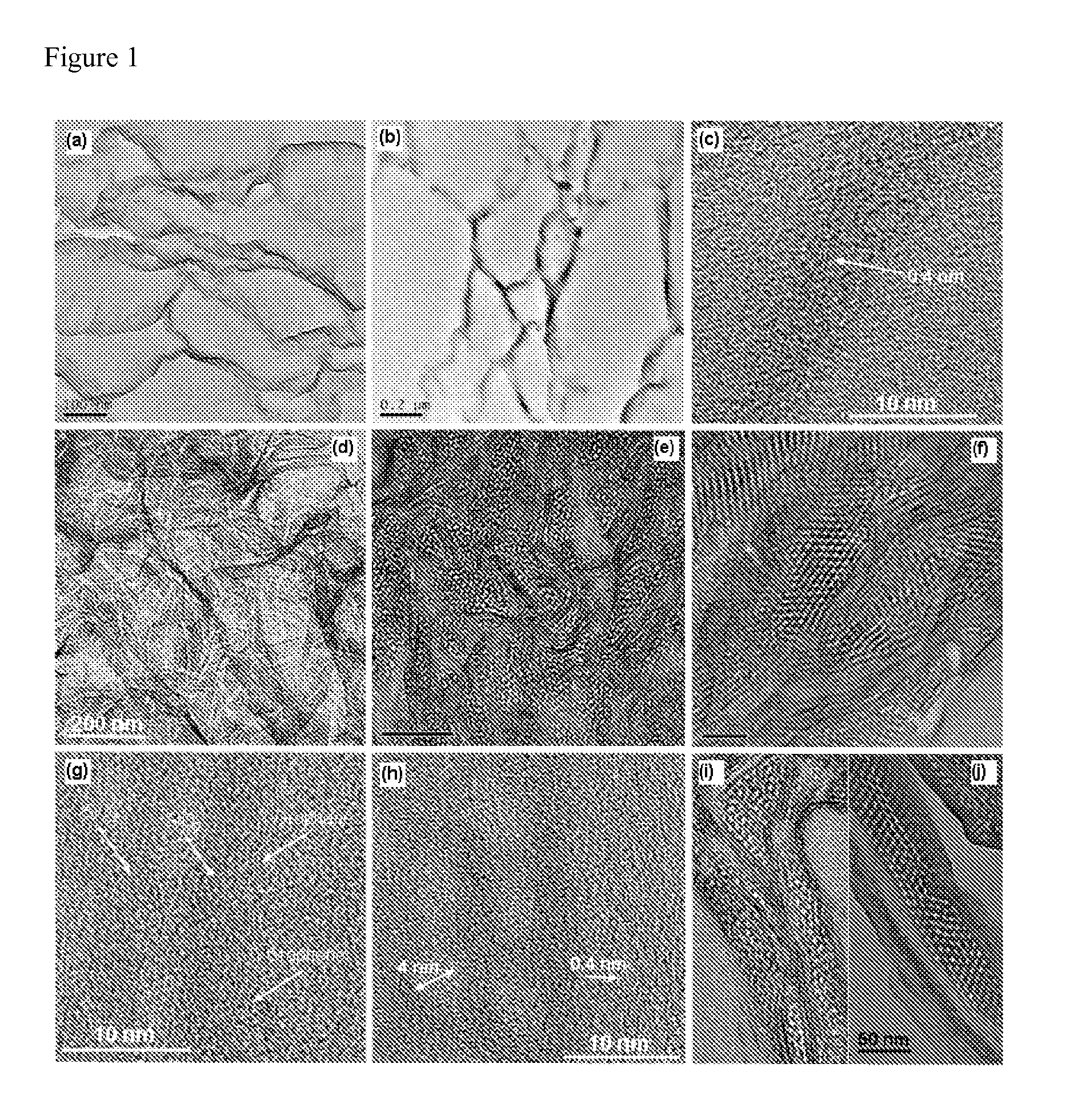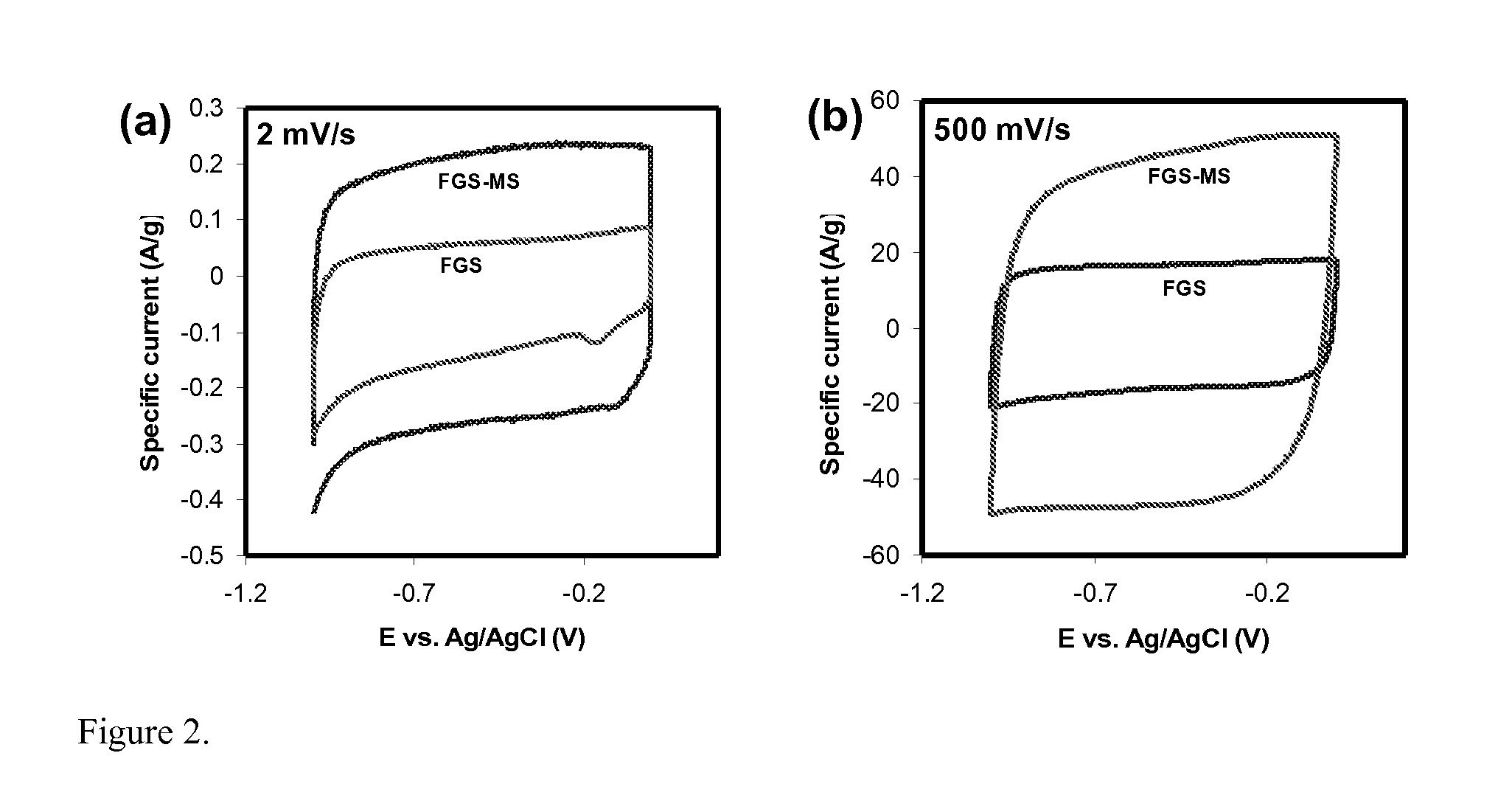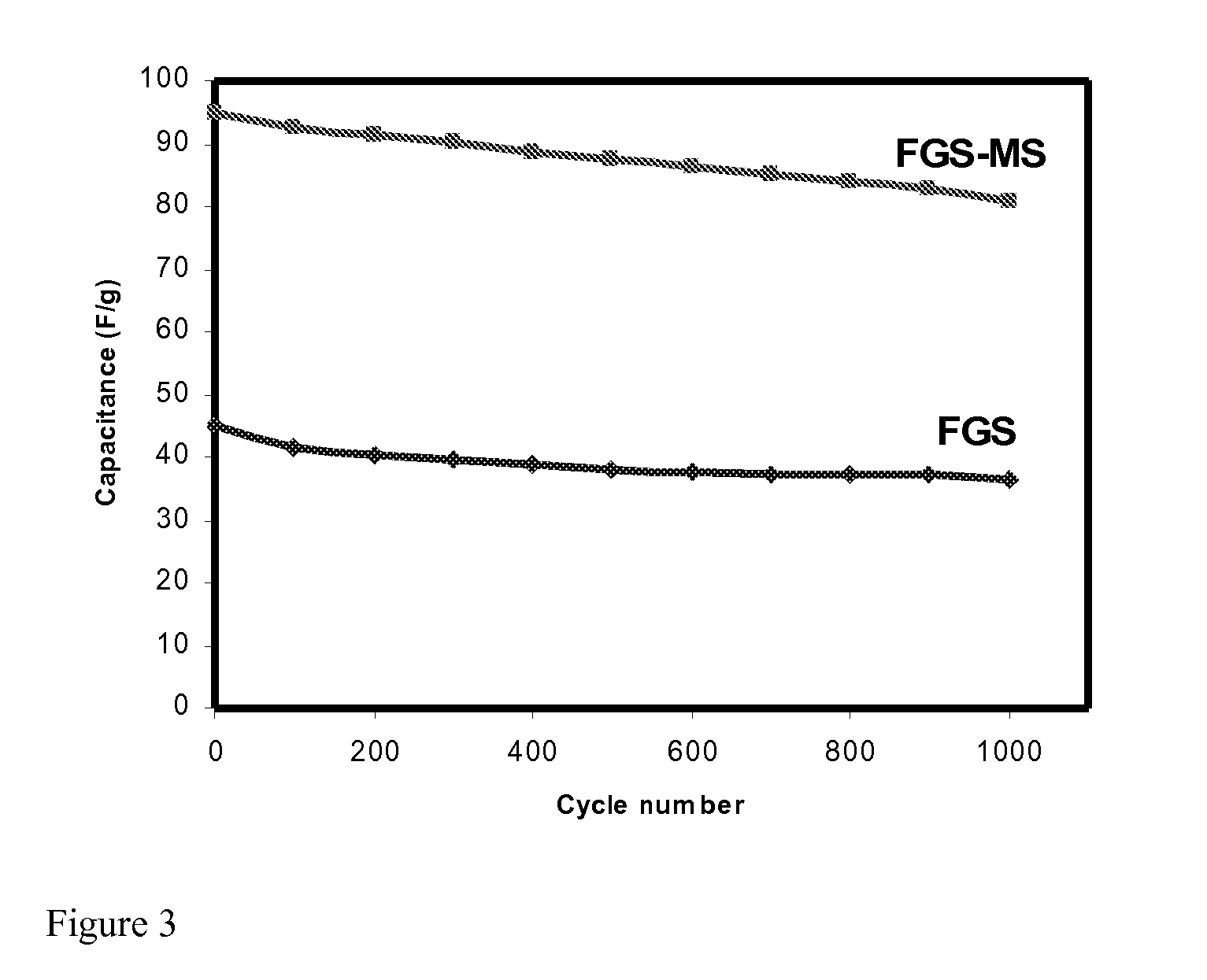Mesoporous Metal Oxide Graphene Nanocomposite Materials
a technology of metal oxide graphene and nanocomposite materials, which is applied in the direction of cell components, electrolytic capacitors, transportation and packaging, etc., can solve the problems of limited stability and operating voltage range of composite materials, inability to completely disperse graphene sheets and access all surface area, and inability to fully disperse graphene sheets
- Summary
- Abstract
- Description
- Claims
- Application Information
AI Technical Summary
Benefits of technology
Problems solved by technology
Method used
Image
Examples
Embodiment Construction
[0032]For the purposes of promoting an understanding of the principles of the invention, reference will now be made to the embodiments illustrated in the drawings and specific language will be used to describe the same. It will nevertheless be understood that no limitations of the inventive scope is thereby intended, as the scope of this invention should be evaluated with reference to the claims appended hereto. Alterations and further modifications in the illustrated devices, and such further applications of the principles of the invention as illustrated herein are contemplated as would normally occur to one skilled in the art to which the invention relates.
[0033]A series of experiments were conducted to demonstrate several aspects of the present invention. One such aspect was the demonstration of a one-step, self-assembly approach to preparing functionalized graphene-mesoporous silica nanocomposites by coating the graphene sheets with a thin layer of mesoporous silica. Another asp...
PUM
 Login to View More
Login to View More Abstract
Description
Claims
Application Information
 Login to View More
Login to View More - R&D
- Intellectual Property
- Life Sciences
- Materials
- Tech Scout
- Unparalleled Data Quality
- Higher Quality Content
- 60% Fewer Hallucinations
Browse by: Latest US Patents, China's latest patents, Technical Efficacy Thesaurus, Application Domain, Technology Topic, Popular Technical Reports.
© 2025 PatSnap. All rights reserved.Legal|Privacy policy|Modern Slavery Act Transparency Statement|Sitemap|About US| Contact US: help@patsnap.com



